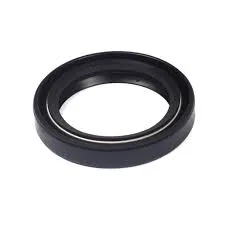10 月 . 02, 2024 22:27 Back to list
Tips for Replacing Spark Plugs to Improve Engine Performance and Efficiency
Changing Spark Plugs A Step-by-Step Guide
Changing spark plugs is one of the most essential maintenance tasks that any car owner can undertake. Spark plugs are small but vital components that ignite the air-fuel mixture in an engine's cylinders, enabling the engine to run smoothly. Over time, spark plugs can wear out due to heat and engine deposits, leading to decreased performance, poor fuel efficiency, and even engine misfires. Therefore, it’s crucial to replace them periodically. This article will guide you through the process of changing spark plugs effectively.
Tools and Materials Required
Before you begin, gather the necessary tools and materials a socket wrench, a spark plug socket, a torque wrench, a gap gauge, anti-seize lubricant, and, of course, the new spark plugs recommended for your vehicle. It's important to ensure that the replacement plugs match your engine's specifications.
Step-by-Step Procedure
1. Preparation Start by ensuring your engine is cool. Working on a heated engine can cause burns and may damage components. Disconnect the negative battery terminal to prevent any electrical shocks.
2. Accessing the Spark Plugs Depending on your car's make and model, you may need to remove components such as engine covers, air intake systems, or other obstacles to access the spark plugs. Consult your vehicle’s service manual for instructions specific to your car.
3. Removing Old Spark Plugs Using the socket wrench and spark plug socket, carefully unscrew the old spark plugs. Turn them counterclockwise and apply steady pressure. If there is resistance, apply a bit of penetrating oil and allow it to sit for a few minutes to help loosen any carbon buildup.
changing spark plugs

4. Inspecting the Old Plugs Once removed, inspect the old plugs for wear or damage. Look for signs of carbon deposits, burning, or excessive wear. This can give you clues about your engine’s health and whether it might have issues like an oil leak or improper fuel mixture.
5. Gapping the New Spark Plugs Before installing the new spark plugs, check the gap using the gap gauge. The right gap ensures optimal engine performance. Adjust the gap if necessary, as per the specifications in your vehicle’s manual.
6. Applying Anti-Seize Lubricant To prevent future seizing, apply a small amount of anti-seize lubricant to the threads of the new spark plugs. Be careful not to get any on the ceramic portion.
7. Installing the New Spark Plugs Carefully thread the new spark plugs into the engine by hand to avoid cross-threading. Once snug, tighten them with the torque wrench to the manufacturer-recommended specifications.
8. Reassemble and Test Reattach any components you removed to access the spark plugs. Reconnect the negative battery terminal and start your engine. Listen for smooth operation, and check for any abnormal sounds or issues.
Conclusion
Changing spark plugs can greatly enhance your vehicle's performance and fuel efficiency. By following these steps and maintaining a regular schedule for changing spark plugs, you will contribute to the longevity and reliability of your engine. If you’re unsure at any stage, don’t hesitate to consult a professional mechanic for assistance. Regular maintenance is key to a healthy car!